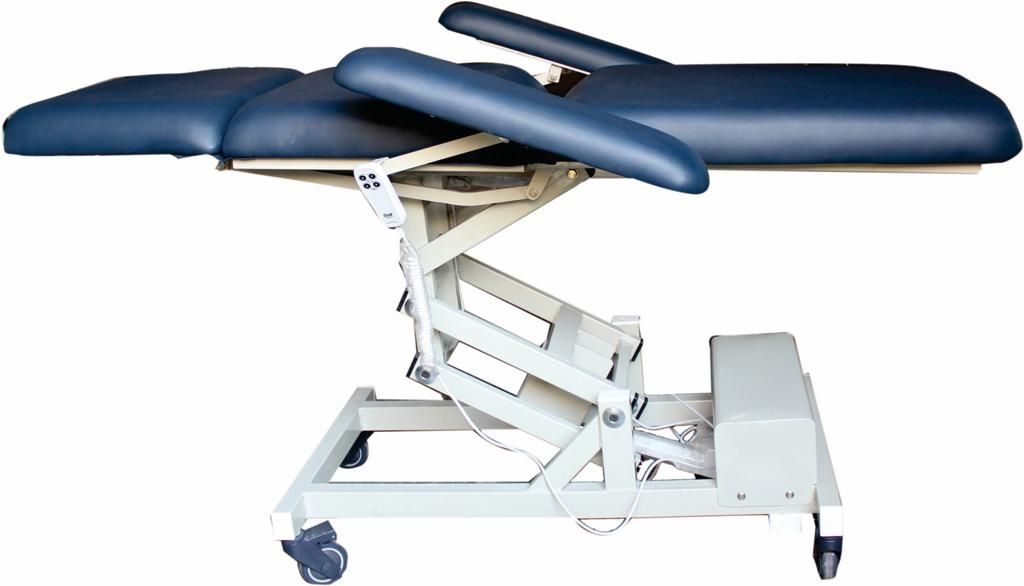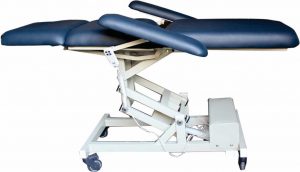
Ultrasound machine / Sonography is a very commonly used diagnostic imaging modality today for diagnosis of various ailments. So it is not uncommon that the sonologists are a busy lot, spending long hours doing numerous scans continuously during the day.
Sonographers are exposed to several occupational health hazards such as eye strain, musculoskeletal pain or injury, carpal tunnel syndrome (CTS) and other problems such as stress, burnout and infections. This article discusses causes, possible preventive measures and some solutions that may help sonographer’s well-being.
Muscle strain and Injury
Sonographers are exposed to a variety of ergonomics-related risk factors while working, as they are often required to assist patients onto and off the exam table, move, shift or re-position them through the examination. This may require heavy lifting in an awkward body posture, causing injury to the back, legs, hands and shoulders. Exerting force in awkward postures, such as bending or reaching, due to handles or push points that are too high or too low are other factors causing similar injuries. Long scan sessions in themselves are problematic.
- Sonologist seat must be comfortable and flexible to maneuver.
- Using power-assisted devices which are common today makes movements of patient relatively effortless. Ultrasound Couches are specially designed for seamless and easy patient lifting, backrest angulation, tilting and leg adjustment. The electric motor helps work with minimum Sonologist effort and scan interruption.
- Ultrasound couch
- Use of smaller portable or handheld ultrasound machines to perform bedside studies, if appropriate, can be useful.
- Controls for equipment should be easily accessible without bending or reaching.
- Sonographers should be trained to use correct body mechanics when moving patients,
- The layout of the examination room may have an impact on the sonographer by making equipment hard to maneuver and position. Examination rooms that are too small make it difficult to properly arrange the patient and equipment for a variety of procedures. Examination rooms that are arranged for only one configuration force sonographers to repeatedly use the same body posture or motions for prolonged periods of time. This increases the risk of injury to the shoulder, elbow, wrist and hand. Hence a more spacious room with possibility of change in configuration augurs well for sonographer’s health.
Eye strain
Eye strain, irritation, itching, burning, double vision, head-aches and fatigues are all problems related to prolonged usage of video display screen. Lighting that does not include dimmer switches or controls, makes monitors difficult to read. This may lead to eye strain and back and neck discomfort as sonographers lean forward to detect items on the screen. Proper room-lighting, reducing screen glare, full window shades are all important, in absence of which the eyes have to strain/ work harder.
Carpal Tunnel Syndrome
Repetitive Strain injuries, carpal tunnel syndrome (CTS) and tendinitis are all problems known to be faced by Ultrasonologists and while being painful in themselves, also lead to further pain in upper extremities. The main cause of carpal tunnel syndrome is the need to hold the probe and work with it possibly exerting pressure too long. The probe wire is also constantly hanging through-out. Sonologist need to hold the probe in one hand while entering parameters and data with the other through the scan, never having an opportunity to change hands and positions.

Use of hand-cable-support and wrist-support can help highly to prevent #CTS and injury to wrist.

Other problems include – Stress, burn-out, infections. Taking breaks, changing routine, hand-washing are all important steps towards overall well-being of Sonologists.

